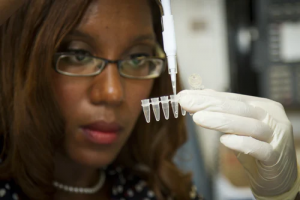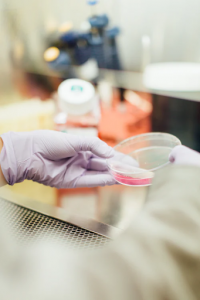
When skimming any biology textbook, one can notice many significant advances have occurred lately. Nevertheless, more meaningful and even rarer advances are breakthroughs. A breakthrough is more than just an advance. For something to be a breakthrough, it must have encountered resistance. It must have broken through something. Here are some of the most sudden, dramatic, and essential biology breakthroughs from the last 30 years.
1. RNA interference discovered
In their first biology high school classes, students are taught the basics of how genes are expressed: DNA, the cell’s database, is copied into the messenger RNA, which transports the information to the ribosome, where proteins are assembled.
But, not surprisingly, it is much more complicated than that. RNAi is short for “RNA interference,” and it refers to the phenomenon where small pieces from RNA can shut down protein translation by restricting the code that the RNA was transporting. In other words, the RNAi prevents the code from getting to the ribosome, so the protein is not assembled.
Why is this important? In addition to defending our bodies against viruses that try to insert themselves into DNA, it can potentially target malfunctioning proteins in various body cells, addressing a wide variety of health conditions that are otherwise difficult to treat. For example, it could be a crucial ally in the fight against cancer or autoimmune diseases.
American scientists Andrew Fire and Craig Mello discovered RNA interference after a series of experiments in 1998. This discovery was awarded a Nobel Prize in 2006, and it has led to significant health-related research, such as the investigation on “silence genes” that cause problems in our bodies.
2. Human Genome Project

First articulated in 1998, the Human Genome Project was the international, collaborative research program whose goal was to complete mapping and understanding of all the genes of human beings. In 2003, they announced that they had completed the human DNA sequence up to 99.9!
This fascinating project will continue to provide vital information to allow other investigations to flourish and develop new tools and technologies. Moreover, it enables the possibility to find the genetic roots of disease and then create a treatment.
3. Stem cells created from mature skin cells

In 2007, Scientists at Oregon Health and Science University and the Oregon National Primate Research Center successfully reprogrammed human skin cells to become embryonic stem cells. Meaning these cells could transform into any cell in the body!
It is believed that by stem cell therapies, doctors will replace cell damage through injury or disease. This therapy could mean a possible treatment for severe chronic illnesses such as Parkinson’s disease.
4. Robotic limbs entirely controlled by the brain.
In 2014, the U.S. The Food and Drug Administration approved the first prosthesis controlled by neural signals from the patient’s brain for the general public.
What is the difference with previous prosthetics? It can be controlled more precisely and efficiently, eliminates sores and pains, increases sensory feedback, allows for an easy attachment, and can be worn all day, every day! These improvements are possible because a titanium implant is inserted into the patient’s bone, serving as a metallic extension where the prosthetic is then fixed. This process is known as osseointegration (Osseo = bone)

5. The first animal cloned
Dolly, the sheep, was the first mammal cloned from an adult cell. Cloned in 1996 by Keith Campbell, Ian Wilmut, and colleagues at the Roslin Institute, Dolly was known as “the world’s most famous sheep.” Cloned animals seem to escape from the science fiction world and, although they don’t, the scientific process behind their existence is fascinating. The production of a healthy clone proved that a cell taken from specific parts of the body of a grown mammal could recreate a whole individual. In the case of Dolly, the cell was taken from a mammary gland. Since Dolly, a large number of animals have been cloned.

Aren’t you fascinated with the biology world? All these investigations have contributed significantly to making our lives and all the living system’s lives better. Yet, many breakthroughs are waiting to be accomplished. And, who knows? Maybe the next revolutionary investigation we will be talking about will have your name on it!
Written by Guadalupe Lauro
June 30th, 2021
